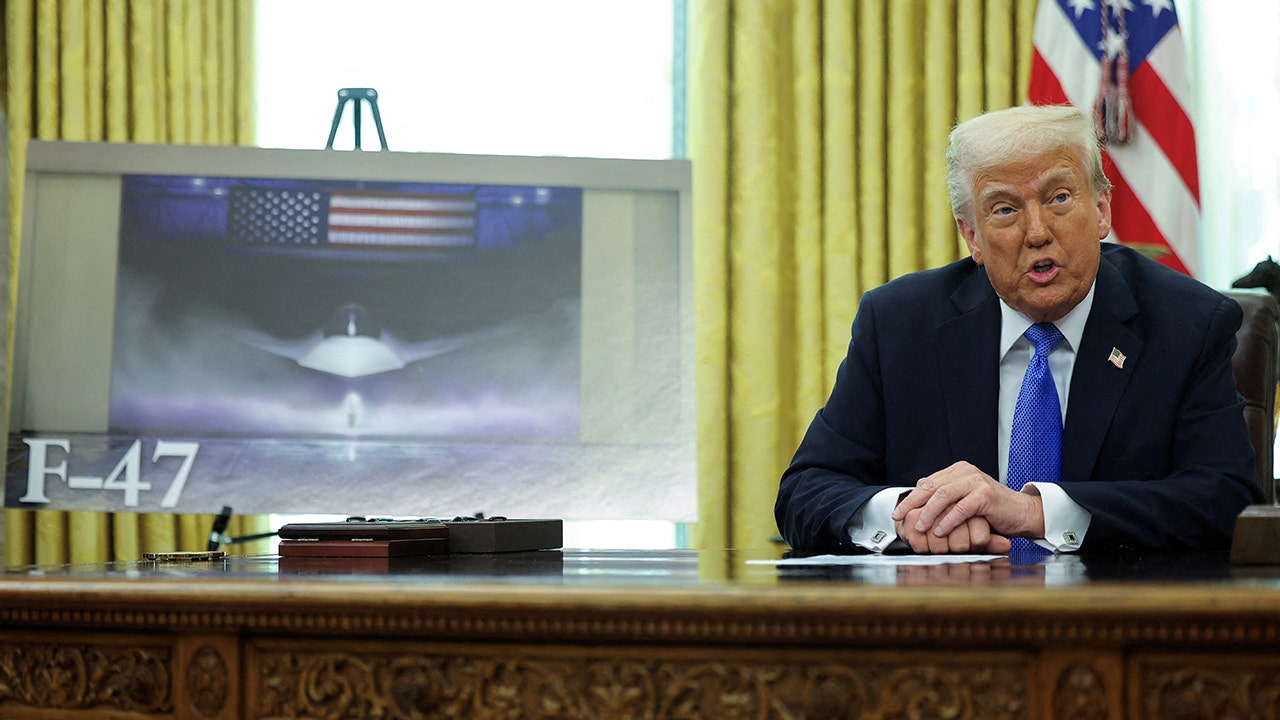US Air Force's F-47: Exploring Boeing's Ambitious (But Unbuilt) Design
The US Air Force's pursuit of air superiority has always been a driving force behind technological innovation. While names like the F-22 Raptor and F-35 Lightning II dominate modern discussions, lesser-known projects offer fascinating glimpses into alternative paths of aviation history. One such intriguing example is the Boeing F-47, a proposed fighter design that, while never built, reveals a compelling vision of future air combat. This article delves into the specifics of the F-47, exploring its unique design features, the reasons behind its cancellation, and its lasting impact on aerospace engineering.
The F-47: A Vision Ahead of its Time
The F-47 wasn't just another fighter jet proposal; it represented a bold leap forward in aerodynamic design and technological integration. Boeing's vision encompassed several key features that pushed the boundaries of what was considered possible in the late 1940s and early 1950s. Key aspects included:
-
Advanced Aerodynamics: Unlike many contemporary designs, the F-47 emphasized sleek lines and a low drag profile. This was crucial for achieving higher speeds and improved maneuverability. Wind tunnel testing data showed promising results, suggesting a potential for supersonic flight, a groundbreaking prospect at the time.
-
Innovative Propulsion: The proposed propulsion system was equally ambitious. While specifics varied in different design iterations, Boeing explored the integration of powerful jet engines capable of delivering exceptional thrust-to-weight ratios. This was vital for achieving the desired performance characteristics.
-
Cutting-Edge Avionics: Though details are scarce regarding its intended avionics suite, the proposed design clearly aimed for advanced technology to enhance situational awareness, targeting, and overall pilot effectiveness. This reflected the growing importance of integrated systems in aerial combat.
-
Unconventional Design Choices: Sketches and documentation suggest an unusual design emphasis on stability and control at high speeds, a consideration often overlooked in earlier jet fighter designs. This speaks to Boeing's forward-thinking approach to engineering.
Why the F-47 Never Took Flight: The Unsung Story
Despite its promising features, the F-47 never progressed beyond the design phase. Several factors contributed to its demise:
-
Shifting Priorities: The Korean War significantly impacted military spending and priorities. The focus shifted towards immediately deployable aircraft, leaving less room for experimental projects like the F-47, which would require substantial time and resources for development and testing.
-
Technological Hurdles: Even with its advanced design, certain technological hurdles proved insurmountable with the available resources and technology of the era. Engine development, material science, and advanced avionics were still in their nascent stages, posing significant challenges.
-
Budgetary Constraints: The Cold War era was marked by immense defense spending, but resources weren't limitless. The development of other, more practical fighter designs with shorter development timelines likely took precedence over the long-term investment required for the F-47.
-
Competition: The US Air Force was evaluating numerous fighter designs concurrently. Ultimately, other proposals, such as the North American F-86 Sabre, offered a more readily achievable path to enhancing air superiority.
Legacy and Lasting Impact
While the Boeing F-47 never saw operational service, its design innovations left a significant mark on the future of aerospace engineering. The emphasis on aerodynamic efficiency, high-speed performance, and advanced avionics prefigured many of the design elements found in later generations of fighter jets. The lessons learned during the F-47's design process undoubtedly informed subsequent Boeing projects, contributing to the company's ongoing success in the aerospace industry.
Further Research
For those interested in delving deeper into the intricacies of the Boeing F-47, exploring archival materials from Boeing's historical archives and relevant aviation museums is highly recommended. These resources often contain valuable design schematics, technical documents, and historical accounts which provide further insight into this fascinating, yet overlooked, aspect of aviation history.
Call to Action: Share your thoughts on the F-47 and other lesser-known aircraft designs in the comments below! What other "what-if" scenarios in aviation history pique your interest?
